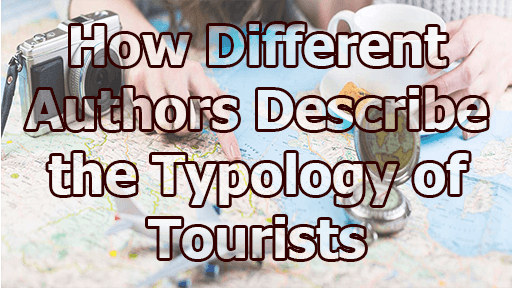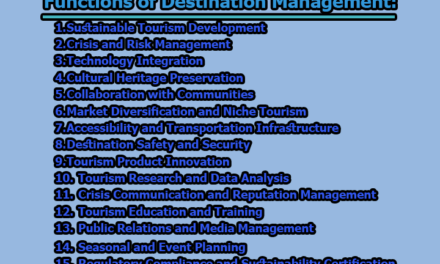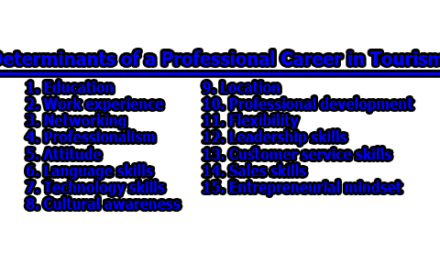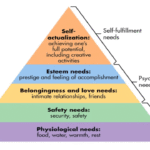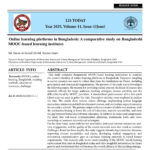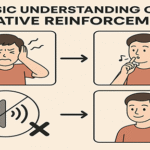How Different Authors Describe the Typology of Tourists:
The world of tourism is a diverse tapestry woven together by travelers with distinct preferences, motivations, and behaviors. Understanding these differences is essential for the tourism industry to tailor experiences that resonate with a wide array of tourists. Different authors have embarked on the quest to classify and categorize these travelers into distinct typologies. This endeavor serves as a vital compass guiding the design of tourism products and services. In this article, we delve into the fascinating landscape of how various authors describe the typology of tourists.
Cohen’s Tourist Typology:
Cohen’s Tourist Typology, developed by Erik Cohen in 1972, classifies tourists into four distinct categories: Organized Mass Tourists, Individual Mass Tourists, Explorers, and Drifters. This typology provides insights into the motivations, behaviors, and characteristics of these different tourist groups. Here, a brief description of each category, with examples and explanations.
1. Organized Mass Tourists: Organized Mass Tourists are the most common type of travelers in the world. They are characterized by their preference for structured, group-oriented, and pre-packaged travel experiences. These tourists seek convenience, predictability, and social interaction during their journeys. They typically follow pre-planned itineraries and may travel in large groups.
Travel Preferences:
- Organized Mass Tourists tend to choose all-inclusive vacation packages, guided tours, and cruises.
- They value the comfort of having transportation, accommodation, and activities pre-arranged by tour operators.
- These tourists are often attracted to well-known tourist destinations and landmarks.
- They enjoy participating in group activities and often stay in large resorts or on cruise ships.
Examples:
- A family booking a week-long, all-inclusive resort vacation in the Caribbean.
- A group of retirees embarking on a guided tour of European capitals.
- A couple booking a Mediterranean cruise with scheduled shore excursions.
2. Individual Mass Tourists: Individual Mass Tourists are similar to Organized Mass Tourists but exhibit a slightly higher level of independence. They prefer the convenience of organized travel but may choose to deviate from the itinerary occasionally. They have a desire for some flexibility in their travel experiences.
Travel Preferences:
- Individual Mass Tourists may participate in organized tours but also venture out on their own during the trip.
- They enjoy exploring well-trodden destinations with the option to customize some parts of their itinerary.
- These tourists are comfortable navigating independently, such as using public transportation.
Examples:
- A couple on a European tour who occasionally break away to explore a city on their own.
- A solo traveler who takes a guided day trip but also explores the destination alone in the evening.
- A family that uses a combination of guided tours and self-guided activities during their vacation.
3. Explorers: Explorers are tourists who seek unique and culturally enriching experiences. They are motivated by a desire for adventure, cultural immersion, and discovery. These travelers are more self-reliant and are open to stepping out of their comfort zones to explore less-touristed destinations.
Travel Preferences:
- Explorers often engage in independent travel, seeking to connect with local cultures and communities.
- They may visit off-the-beaten-path locations, remote villages, or destinations known for their cultural authenticity.
- These tourists are interested in activities like hiking, wildlife safaris, and interacting with local residents.
Examples:
- A backpacker exploring Southeast Asia and staying in small, locally-run guesthouses.
- A couple trekking in the Andes Mountains and engaging in homestays with indigenous communities.
- A solo traveler embarking on a wildlife expedition in the Amazon rainforest.
4. Drifters: Drifters are the most unconventional and spontaneous type of tourist. They are motivated by freedom, novelty, and unpredictability. They prefer to avoid planned itineraries and often do not set specific destinations or timelines. Drifters have a strong desire to break away from conventional tourism.
Travel Preferences:
- Drifters travel without detailed plans, choosing their destinations on a whim.
- They often rely on hitchhiking, camping, and staying in budget accommodations.
- These tourists enjoy the thrill of serendipity, connecting with fellow travelers and locals along the way.
Examples:
- A young traveler backpacking through Europe with no set route or return date.
- An individual embarking on a road trip with no fixed destinations, relying on spontaneous decisions.
- A couple hitchhiking across South America, camping in remote areas and meeting locals on their journey.
Smith’s Tourist Typology:
Smith’s Tourist Typology, which was developed by Valene Smith in 1989. This typology classifies tourists into seven distinct categories based on their motivations, behaviors, and travel preferences. Each category offers unique insights into the various ways people approach and experience travel.
1. Explorer: Explorers are adventurous travelers who seek new and unique experiences. They are driven by the desire to discover less-traveled and off-the-beaten-path destinations. These tourists are typically open-minded, curious, and willing to take risks.
Travel Preferences:
- Explorers often prefer independent travel, seeking authentic and immersive experiences.
- They may choose to explore remote and adventurous destinations, such as rainforests, deserts, or mountains.
- Interacting with local cultures and participating in activities that challenge them physically and mentally is appealing to them.
Examples:
- A backpacker embarking on a solo journey to explore the uncharted regions of Patagonia.
- A group of friends venturing into the heart of the Amazon Rainforest to engage with indigenous communities.
- An individual seeking to hike and camp in remote areas like the Arctic tundra or the Himalayas.
2. Elite Tourists: Elite tourists are typically well-off travelers who prioritize luxury, exclusivity, and high-end experiences. They have a strong desire for comfort and personalized service during their trips.
Travel Preferences:
- Elite tourists often choose upscale accommodations, fine dining, and private transportation.
- They seek out exclusive and opulent experiences, such as staying in luxury resorts, private islands, or elegant city hotels.
- Personalized services, such as private butlers or chauffeurs, are highly valued by these travelers.
Examples:
- A couple enjoying a lavish honeymoon in an overwater bungalow in the Maldives.
- High-net-worth individuals chartering private yachts for Mediterranean island-hopping.
- Business executives staying in luxury penthouse suites while attending international conferences.
3. Off-Beat Tourists: Off-beat tourists are motivated by a desire to explore unconventional and unique destinations that are often overlooked by mainstream tourists. They value authenticity and seek unusual experiences.
Travel Preferences:
- Off-beat tourists are intrigued by quirky and off-the-wall attractions or destinations.
- They may visit unconventional places like ghost towns, abandoned factories turned into art installations, or festivals celebrating unusual themes.
- These tourists have a knack for discovering hidden gems and appreciating the unconventional.
Examples:
- A group of friends exploring the art installations in the abandoned ruins of Detroit.
- A solo traveler venturing to the remote and surreal landscapes of Iceland.
- A couple attending quirky festivals like the Tomato Fight in Buñol, Spain.
4. Unusual Tourists: Unusual tourists are drawn to destinations and experiences that are considered exotic and culturally distinct. They are fascinated by places and activities that are vastly different from their own cultural norms.
Travel Preferences:
- Unusual tourists prioritize immersive cultural experiences and interactions with local communities.
- They often visit places with unique traditions, rituals, and practices.
- Authenticity and the opportunity to witness unconventional customs are central to their travel experiences.
Examples:
- Travelers living with indigenous tribes in the Amazon rainforest to experience their way of life.
- Individuals participating in the vibrant and colorful Holi Festival in India.
- Tourists visiting Morocco to explore the bustling markets of Marrakech and engage with local artisans.
5. Incipient Mass Tourists: Incipient Mass Tourists represent a transitional stage between niche and mass tourism. They are somewhat adventurous but still value some level of comfort and convenience during their travels.
Travel Preferences:
- Incipient Mass Tourists are open to emerging and less-visited destinations.
- They seek a balance between adventure and having some basic infrastructure in place.
- These tourists appreciate unique experiences but also value convenience and amenities.
Examples:
- Travelers exploring the cultural richness of Myanmar before it became a major tourist hotspot.
- Individuals embarking on eco-tourism experiences in Costa Rica, appreciating the balance between adventure and comfort.
- Couples visiting emerging destinations in Eastern Europe, such as Budapest or Sofia, before they become heavily touristed.
6. Mass Tourists: Mass Tourists represent a substantial segment of travelers who prefer well-established, tourist-friendly destinations and standard tourist activities. They often value convenience and comfort during their trips.
Travel Preferences:
- Mass tourists are drawn to well-known cities and tourist landmarks.
- They enjoy guided tours, group travel, and familiar, tourist-friendly activities.
- Convenience and comfort are their top priorities when traveling.
Examples:
- Tourists visiting iconic cities like Paris, Rome, or Tokyo to explore renowned landmarks.
- Families going on package holidays to popular beach destinations like Cancún or Bali.
- Couples choosing guided bus tours to explore multiple cities within a limited time frame.
7. Charter Tourists: Charter tourists select pre-packaged tours offered by tour operators, giving up some control over their itineraries in exchange for convenience and affordability.
Travel Preferences:
- Charter tourists rely on tour operators for transportation, accommodations, and activities.
- They often travel in groups with fixed schedules and pre-arranged activities.
- Charter tourists choose these packages for their affordability and ease of planning.
Examples:
- Families booking all-inclusive resort vacations in destinations like the Dominican Republic.
- Seniors embarking on guided river cruises through Europe, where the operator manages the entire journey.
- Friends joining organized bus tours to explore multiple European countries in a short time.
Amex’s Tourist Typology:
Amex divided tourists in five categories:
1. Adventurer: Adventurers are well-educated and inquisitive tourists who actively seek out new and unique travel experiences. They are characterized by their curiosity and open-mindedness, always looking to broaden their horizons.
Travel Preferences: Adventurers are motivated by novelty and the thrill of exploration. They often choose destinations that offer opportunities for cultural immersion and adventurous activities. They are willing to take risks and embrace the unknown.
Examples: Adventurers may embark on treks to remote regions like the Himalayas, explore the Galápagos Islands to witness unique wildlife, or participate in cultural exchanges with indigenous communities. Their itineraries are often flexible, allowing them to adapt to new discoveries along the way.
2. Worriers: Worriers are tourists who, due to a lack of self-confidence or anxieties, may have concerns about traveling, particularly by air. They tend to prefer domestic holidays over international ones, seeking familiarity and comfort in their trips.
Travel Preferences: Worriers often opt for domestic getaways to avoid long flights. They may choose well-known destinations and activities that do not involve excessive risk. Familiarity and a sense of security are essential for their travel choices.
Examples: Worriers might opt for weekend getaways to nearby cities, road trips, or cabin retreats. They are likely to stick to destinations they have visited before and activities that do not involve strenuous physical or emotional challenges.
3. Dreamers: Dreamers are travelers with high aspirations and a penchant for envisioning exotic and luxurious destinations. However, their actual travel experiences may not align with their grand aspirations, often leading to visits to more ordinary places.
Travel Preferences: Dreamers aspire to travel to far-off, glamorous locations, but they may not always have the means or opportunity to do so. Consequently, their travel experiences often take them to more typical destinations.
Examples: Dreamers might dream of lavish getaways to the Maldives but end up visiting a picturesque beach on a more accessible coast. Their trips might still be enjoyable, but they may not live up to their grand visions.
4. Economizer: Economizers perceive that travel doesn’t significantly add value to their lives and view it as an unnecessary expense. They are always conscious of their travel spending and tend to be frugal.
Travel Preferences: Economizers seek to minimize travel costs and often opt for budget-friendly accommodations and activities. They may consider travel as a practical necessity rather than a leisure pursuit and are reluctant to spend extra on special amenities.
Examples: Economizers may choose budget hotels, eat at affordable local eateries, and use public transportation instead of private transfers. Their trips are typically focused on the essentials and cost-effectiveness.
5. Indulgers: Indulgers are affluent travelers who can afford and are willing to pay for extra comfort and luxury during their journeys. They are accustomed to high standards and seek opulence in their travel experiences.
Travel Preferences: Indulgers are motivated by a desire for comfort and luxury. They often stay in five-star accommodations, dine at gourmet restaurants, and enjoy premium services. Their travel experiences are defined by extravagance and exclusivity.
Examples: Indulgers may book stays at luxury resorts on private islands, charter private jets for their trips, and dine at Michelin-starred restaurants. Their travel choices reflect a preference for high-end, pampered experiences.
Plog’s Tourist Typology:
Stanley Plog’s Tourist Typology, developed in 1977, categorizes tourists into three primary groups: Allocentric (The Wanderers), Psycho-Centric (The Repeaters), and Mid-Centric (Combination).
1. Allocentric (The Wanderers): Allocentrics are adventurous and open-minded travelers who are motivated by a strong desire to explore new and unique experiences. They thrive on novelty and are eager to take risks in their travels. These individuals are often curious and enthusiastic about discovering the unfamiliar.
Travel Preferences:
- Allocentrics prefer independent travel that allows them to chart their own course.
- They are drawn to less-touristed and off-the-beaten-path destinations where they can interact with local cultures.
- Adventure and unpredictability are central to their travel experiences, as they actively seek new and diverse activities.
Examples:
- Backpackers setting out on a solo journey to explore uncharted regions in South America.
- Travelers who undertake expeditions to challenging environments like the polar regions or deep rainforests.
- Individuals seeking out unique cultural experiences in remote villages and indigenous communities.
2. Psycho-Centric (The Repeaters): Psycho-Centrics are tourists who are risk-averse and prefer familiar, structured, and predictable travel experiences. They are motivated by comfort, security, and the reassurance of known environments. These travelers are inclined toward well-known destinations and routines.
Travel Preferences:
- Psycho-Centrics often choose package tours and all-inclusive vacations, as they value convenience and predictability.
- They are drawn to well-established and popular tourist destinations where they can engage in familiar activities.
- These tourists prefer the reassurance of predefined itineraries and well-structured experiences.
Examples:
- Families booking a week-long package holiday to a beach resort in a popular tourist destination.
- Couples taking a guided tour to explore iconic cities in Europe like Paris, Rome, or London.
- Seniors opting for cruises to well-trodden destinations where they can enjoy organized activities and entertainment.
3. Mid-Centric (Combination): Mid-Centrics fall somewhere between Allocentrics and Psycho-Centrics. They strike a balance between seeking new experiences and valuing familiar ones. These travelers are open to some adventure but also appreciate the comfort and convenience of established destinations.
Travel Preferences:
- Mid-Centrics often participate in both organized and independent travel. They enjoy mixing adventure with more mainstream experiences.
- They may explore emerging destinations or lesser-known attractions while also engaging in familiar tourist activities.
- Flexibility and the option to customize their itineraries are important to them.
Examples:
- A family on vacation exploring cultural sites in an emerging destination but also spending time at a resort with well-known amenities.
- Friends choosing to visit a popular tourist city but also exploring less-visited neighborhoods and local markets.
- Couples who combine adventurous activities, such as hiking or wildlife safaris, with guided city tours in various destinations.
There are further subcategories known as “Near-Allocentric” and “Near-Psychocentric.” These subcategories represent travelers who exhibit characteristics that are intermediate between the main typologies, indicating a degree of flexibility and a combination of traits. Let’s explore these subcategories:
4. Near-Allocentric: Near-Allocentrics share similarities with Allocentrics but exhibit a slightly lower willingness to take risks and embrace the unknown. They are more adventurous than Mid-Centrics but not as daring as pure Allocentrics.
Travel Preferences:
- Near-Allocentrics are drawn to destinations and experiences that offer some level of adventure but with a safety net.
- They may explore less-visited regions, but they appreciate a degree of comfort and infrastructure.
- These tourists often seek unique cultural experiences but with some familiar elements to ensure a more comfortable trip.
Examples:
- Travelers exploring remote areas in Southeast Asia while staying in comfortable guesthouses.
- Couples who venture off the beaten path in a foreign country but book accommodations with known international hotel chains.
- Individuals seeking cultural immersion through homestays in rural villages but with access to basic amenities.
5. Near-Psychocentric: Near-Psychocentrics exhibit traits similar to Psycho-Centrics but are more open to occasional deviations from familiar travel patterns. They have a higher degree of flexibility in their travel choices.
Travel Preferences:
- Near-Psychocentrics may explore mainstream tourist destinations but with a willingness to adapt their itineraries occasionally.
- They are open to occasional surprises and diversions in their travel experiences.
- While they generally prefer well-structured trips, they may include unique or less-known activities in their plans.
Examples:
- Tourists visiting major cities but choosing to explore unconventional neighborhoods or unique local experiences.
- Families opting for package holidays but being open to trying local cuisine and engaging in cultural events.
- Friends traveling to popular resorts but taking day trips to explore hidden gems in the region.
Types of Tourism:
Let’s explore two broad types of tourism: Domestic Tourism and International Tourism:
1. Domestic Tourism: Domestic tourism refers to the act of traveling and exploring tourist destinations within one’s own country. It involves residents of a particular country traveling for leisure, recreation, or holiday purposes within the national borders.
Characteristics:
- Tourists: Domestic tourists are individuals or groups of people who reside within a specific country and choose to travel and experience various destinations within that same country.
- Travel Purposes: Domestic tourism can encompass a wide range of purposes, including vacations, weekend getaways, visiting friends and family, exploring cultural and historical sites, and engaging in various recreational activities.
- Accessibility: Domestic tourism is generally more accessible, as it doesn’t involve crossing international borders. It often involves shorter travel distances and less complexity related to visas and immigration.
- Economic Impact: Domestic tourism has a significant economic impact on a country. It boosts the local economy by generating revenue for accommodation, transportation, restaurants, and various attractions. It also provides employment opportunities.
- Cultural and National Identity: Domestic tourism can foster a sense of national identity and pride as residents explore their own country’s heritage, culture, and natural beauty.
- Safety and Familiarity: Traveling within one’s own country can provide a sense of safety and familiarity, making it a popular choice for families, individuals, and groups.
Examples:
- A family from New York City taking a weekend trip to explore the historic sites of Washington, D.C.
- A group of friends from London embarking on a road trip to explore the scenic landscapes of the Scottish Highlands.
- A couple from Sydney spending a relaxing week on the beaches of the Gold Coast in Australia.
2. International Tourism: International tourism, also known as outbound tourism, refers to the act of traveling across international borders to explore and experience destinations in foreign countries. It involves residents of one country visiting and spending time in another country for leisure, business, or other purposes.
Characteristics:
- Tourists: International tourists are individuals or groups who travel from their home country to another country for various reasons, including leisure, business, cultural exchange, and education.
- Travel Purposes: International tourism encompasses a wide range of purposes, including sightseeing, adventure travel, business meetings, educational pursuits, medical tourism, and more.
- Diversity of Destinations: International tourists have access to a wide array of international destinations, each offering unique cultural, natural, and historical experiences.
- Cross-Cultural Experiences: International tourism provides opportunities for travelers to interact with and learn from people of different cultures, fostering cross-cultural understanding and appreciation.
- Economic Impact: International tourism is a significant contributor to the economy of the host country. It supports various sectors such as hospitality, transportation, and tourism-related services.
- Global Exchange: International tourism promotes global exchange of ideas, traditions, and perspectives, contributing to the interconnectedness of the world.
Examples:
- A family from the United States traveling to France to explore the art and culture of Paris.
- A business executive from Japan visiting Singapore for a conference and taking time to explore the city.
- A student from India pursuing higher education in the United Kingdom and traveling on weekends to explore different European countries.
In conclusion, in the realm of tourism, the pursuit of understanding and classifying tourists is an evolving journey. The typologies crafted by various authors provide invaluable insight into the multifaceted nature of travelers, shedding light on their motivations, behaviors, and expectations. As we conclude this exploration, we are reminded that the world of tourism is as diverse as the travelers themselves. From the adventurous explorers to the comfort-seeking indulgers, these typologies offer the tourism industry a compass for creating tailored experiences that resonate with each distinct category of tourists. By embracing this diversity and customizing offerings to cater to the nuanced needs of different traveler types, the tourism sector can continue to thrive and evolve, offering enriching and memorable experiences to travelers across the globe.
References:
- Burns, P. M. (1999). An Introduction to Tourism and Anthropology. Routledge, London.
- Cohen, E. (1972). Toward a Sociology of International Tourism. Social Research, 39, 164-182.
- Cohen, E. (1973). Nomads from Affluence: Notes on the Phenomenon of Drifter-Tourism. International Journal of Comparative Sociology, 1(2), 89-103.
- Cohen, E. (1974). Who is Tourist?: A Conceptual Clarification. The Sociological Review, 4, 527-555.
- Cohen, E. (1979). A Phenomenology of Tourist Experiences. Sociology, 13, 179-201.
- Connell, J., & Lowe, A. (1997). Generating Grounded Theory from Qualitative Data: The Application of Inductive Methods in Tourism and Hospitality Management Research. Progress in Tourism and Hospitality Research, 3, 165-173.
- Crompton, J. L. (1979). Motivations for Pleasure Vacations. Annals of Tourism Research, 6, 408-424.
- Dann, G. M. S. (1977). Anomie, Ego-Enhancement and Tourism. Annals of Tourism Research, 4, 184-194.
- Dann, G. M. S. (1981). Tourist Motivation: An Appraisal. Annals of Tourism Research, 8, 187-219.
- Dann, G. M. S., & Cohen, E. (1991). Sociology and Tourism. Annals of Tourism Research, 18, 155-169.
- Epperson, A. (1983). Why People Travel? Journal of Physical Education, Recreation and Dance, 4, 53-54.
- Gottlieb, A. (1982). Americans’ Vacations. Annals of Tourism Research, 9, 165-187.
- Graburn, N. H. H. (1983). The Anthropology of Tourism. Annals of Tourism Research, 10, 9-33.
- Gray, P. (1970). International Travel-International Trade. Lexington Books, Lexington, Heath.
- Hsieh, S., O’ Leary, J. T., & Morrison, A. M. (1994). A Comparison of Package and Non-Package Travelers from the United Kingdom. Journal of International Consumer Marketing, 3, 79-100.
- Hsieh, S., O’ Leary, J. T., Morrison, A. M., & Chang, P. S. (1993). Modelling the Travel Mode Choice of Australian Outbound Travelers. The Journal of Tourism Studies, 4, 51-62.
- Lowyck, E., Langenhove, L. V., & Bollaert, L. (1992). Typologies of Tourist Roles. In P. Johnson & B. Thomas (Eds.), Choice and Demand in Tourism (pp. 13-32). Mansell, London.
- Lundberg, D. E. (1990). The Tourist Business, 6th edn. Van Nostrand Reinhold, New York.
- MacCannell, D. (1976). The Tourist: A New Theory of the Leisure Class. Macmillan, London.
- Madrigal, R. (1995). Personal Values, Traveler Personality Type, and Leisure Travel Style. Journal of Leisure Research, 27, 125-142.
- Mathieson, A., & Wall, G. (1982). Tourism Economic, Physical, and Social Impacts. Longman, London.
- Mo, C., Howard, D. R., & Havitz, M. E. (1993). Testing an International Tourist Role Typology. Annals of Tourism Research, 20, 319-335.
- Morrison, A. M., Hsieh, S., & O’ Leary, J. T. (1994). A Comparison of the Travel Arrangements of International Travelers from France, Germany, and the UK. Tourism Management, 15, 451-463.
- Pearce, P. L. (1982). The Social Psychology of Tourist Behavior. Pergamon, Oxford.
- Pitts, R., & Woodside, A. (1986). Personal Values and Travel Decisions. Journal of Travel Research, 25, 20-25.
- Plog, S. C. (1974). Why Destination Areas Rise and Fall in Popularity. The Cornell Hotel and Restaurant Administration Quarterly, 4, 55-58.
- Plog, S. C. (1994). Developing and Using Psychographics in Tourism Research. In: J.R.B. Ritchie & C.R. Goeldner (Eds.), Travel, Tourism, and Hospitality Research, 2nd edn. (pp. 209-218). Wiley, New York.
- Quiroga, I. (1990). Characteristics of Package Tourists in Europe. Annals of Tourism Research, 17, 185-207.
- Ryan, C. (1991). Recreational Tourism: A Social Science Perspective. Routledge, London.
- Schuchat, M. G. (1983). Comforts of Group Tourists. Annals of Tourism Research, 10, 465-477.
- Schwartz, S. H., & Bilsky, W. (1987). Towards a Universal Psychological Structure of Human Values. Journal of Personality and Social Psychology, 53, 550-562.
- Sharpley, R. (1994). Tourism, Tourists, and Society. ELM, Huntingdon.
- Sharpley, R. (1999). Tourism, Tourists, and Society, 2nd edn. ELM, Huntingdon.
- Smith, V. (1977). Hosts and Guests: The Anthropology of Tourism. The University of Pennsylvania Press, Philadelphia, PA.
- Taylor, G. D. (1994). Styles of Travel. In: W. Theobald (Ed.), Global Tourism–The Next Decade (pp. 189-198). Butterworth-Heinemann, Oxford.
- Urry, J. (1990). The Tourist Gaze: Leisure and Travel in Contemporary Societies. Sage, London.
- Uysal, M., & Hagan, L. A. R. (1993). Motivation of Pleasure Travel and Tourism. In: M. Khan, M. Olsen, & T. Var (Eds.), VNR`s Encyclopedia of Hospitality and Tourism (pp. 798-810).
- Yoon, J., & Shafer, E. L. (1997). An Analysis of Sun-Spot Destination Resort Market Segments: All-Inclusive Package Versus Independent Travel Arrangements. Journal of Hospitality & Tourism Research, 21, 141-159.
- Yuan, S., & McDonald, C. (1990). Motivational Determinants of International Pleasure Travel. Journal of Travel Research, 29, 42-44.
- Zins, A. H. (1998). Leisure Traveler Choice Models of Theme Hotels Using Psychographics. Journal of Travel Research, 36, 3-15.

Assistant Teacher at Zinzira Pir Mohammad Pilot School and College

